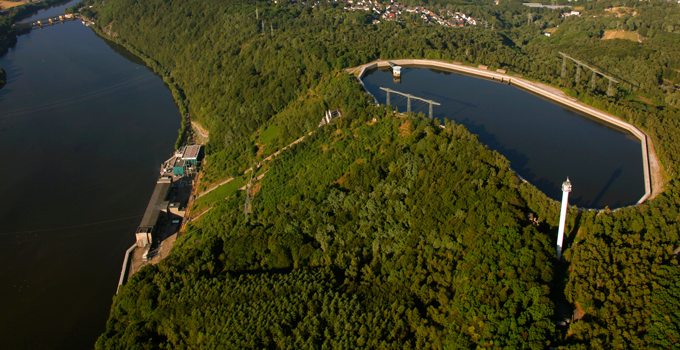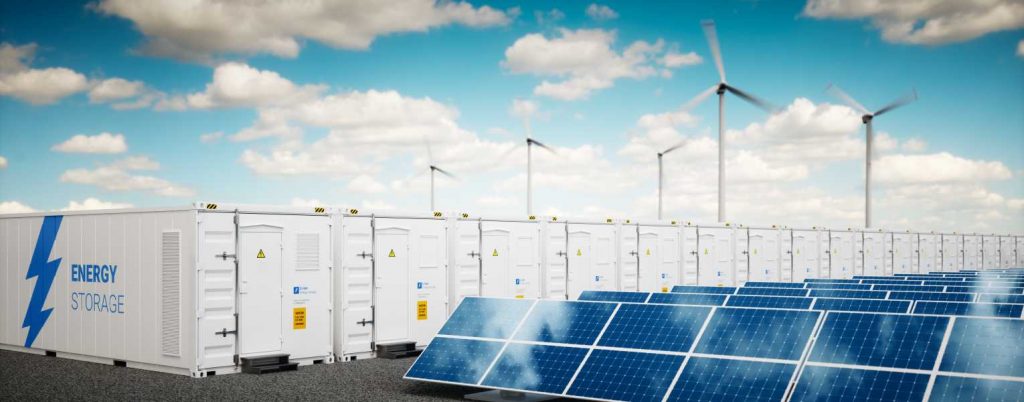- With increased investments in renewable energy resources, it is important to incoporate use of energy storage systems.
- Energy storage systems addresses the intermittent nature of renewable energy to ensure energy efficiency and reliability.

Solar panels and wind turbines solely will not be enough to achieve global decarbonisation ambitions. The resources rely on sunshine and wind to create electricity, which varies according to the weather. Energy storage devices help to assure energy stability and security. Investors, utilities, installers, manufacturers, and project developers all collaborate on the development and improvement of energy storage systems. For example, Growattt, a global pioneer in distributed energy solutions, displayed a diverse range of solar and energy storage systems. Also, KSTAR announced its participation in the Intersolar South America 2024 meeting. They developed BluePulse energy storage technologies to optimize energy management for a variety of applications. Governments across South America are boosting their expenditures in energy storage, with an emphasis on expanding storage capacity.
Overhead line connectors join electrical conductors or cable segments to form power transmission networks. They establish the network for electrical connections and insure insulators and conductors. They serve in termination, suspension, or as conductors. Overhead line connectors enable the connection of energy storage systems to the main electrical grid. They also help to ensure the integrity and dependability of electricity transmission. TTF Power Systems is a one-stop shop for utility hardware fittings, transmission line accessories, and power line construction, which includes overhead line connectors. We provide our customers the industry’s most wide product line and knowledgeable service. Moreover, we offer quality control, which begins with the first batch of samples that you receive from us and continues throughout the entire production phase.
Storage methods employed in South America’s electricity infrastructure in 2024.
South America continues to innovate, investigate, and develop energy storage systems to improve grid stability. These systems contribute to the stability of energy generated by renewable energy sources such as solar and wind. With rising investments in renewable energy, the region may see more funding in large-scale and distributed storage systems. These advancements contribute to South America’s ability to establish a more resilient and sustainable energy infrastructure. For example, Brazil plans to enhance the use of small-scale solar electricity in the country. Energy storage systems will be necessary to ensure efficiency. Meanwhile, overhead line connectors ease the removal and reconnection of electrical lines. This is critical during maintenance and repair of energy storage devices. The following are the main energy storage solutions in 2024.

- Pumped hydro storage – pumping water to a higher elevation during periods of low energy demand and releasing it during peak periods is also a storage solution. This is well suited for seasonal energy storage to help manage the variability of renewable energy sources.
- Lithium-ion battery storage – this is the most adopted energy storage technology across South America. They help to store excess energy generated by solar and wind farms to ensure a steady supply of electricity. Countries like Chile, Brazil, and Argentina have heavily invested in lithium-ion battery systems.
- Distributed energy storage systems – this system involves smaller battery units installed in homes or communities paired with solar panels. In Peru and Bolivia, DESS helps to provide reliable electricity to remote communities.
- Thermal energy storage – Chie has been a pioneer in thermal energy storage through concentrated solar power (CSP). This storage also works in industrial processes where heat can be stored and used as needed.
Challenges for the implementation of energy storage solutions in 2024
The adoption of energy storage technologies in South America in 2024 confronts many hurdles. These problems may have an impact on the technology’ scalability and effectiveness. Economic, technical, regulatory, and societal considerations can all provide problems. The region must put in place certain solutions to solve these difficulties and meet their decarbonisation targets. This will need collaborative efforts from governments, the commercial sector, international organizations, and local communities. This will also assist the region incorporate energy storage systems and support the transition to renewable energy. Overhead line connectors link the storage system’s output to the distribution lines that deliver power to users. The following are the challenges to the adoption of energy storage technologies.

- Grid infrastructure barriers – outdated infrastructure in South America is not equipped to handle the integration of large-scale energy storage systems.
- High initial costs – the upfront costs of installing energy storage systems remain high. This includes the cost of the storage units and infrastructure needed for grid integration.
- Economic and market barriers – the energy storage market in South America lacks large-scale deployment. This can limit the economic incentives for deploying energy storage.
- Technical challenges – some of the energy storage technologies are still emerging and may not be ready for adoption. They may also not be able to integrate with renewable energy sources like solar and wind.
